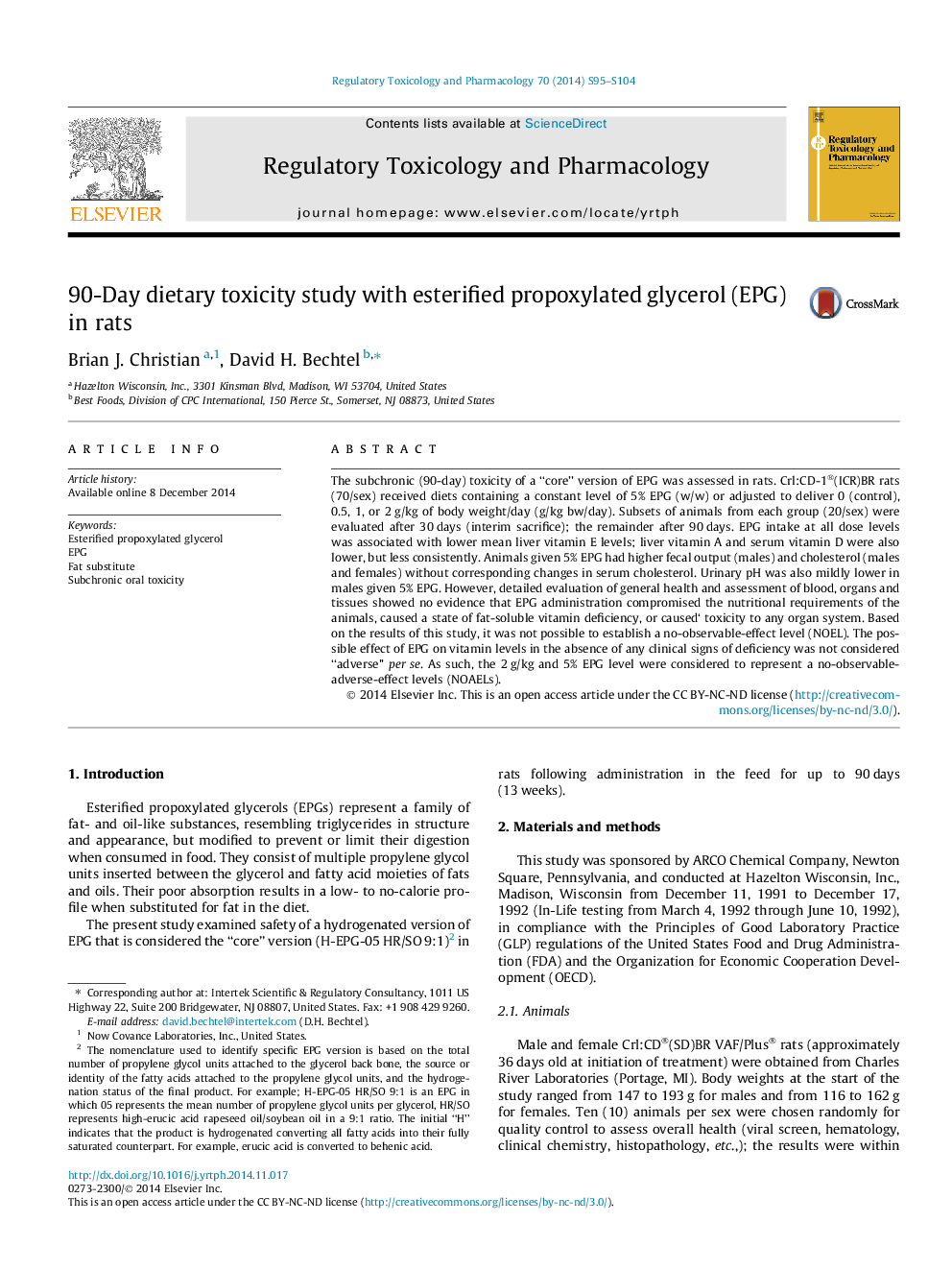| Article ID | Journal | Published Year | Pages | File Type |
|---|---|---|---|---|
| 5857013 | Regulatory Toxicology and Pharmacology | 2014 | 10 Pages |
Abstract
The subchronic (90-day) toxicity of a “core” version of EPG was assessed in rats. Crl:CD-1®(ICR)BR rats (70/sex) received diets containing a constant level of 5% EPG (w/w) or adjusted to deliver 0 (control), 0.5, 1, or 2Â g/kg of body weight/day (g/kg bw/day). Subsets of animals from each group (20/sex) were evaluated after 30Â days (interim sacrifice); the remainder after 90Â days. EPG intake at all dose levels was associated with lower mean liver vitamin E levels; liver vitamin A and serum vitamin D were also lower, but less consistently. Animals given 5% EPG had higher fecal output (males) and cholesterol (males and females) without corresponding changes in serum cholesterol. Urinary pH was also mildly lower in males given 5% EPG. However, detailed evaluation of general health and assessment of blood, organs and tissues showed no evidence that EPG administration compromised the nutritional requirements of the animals, caused a state of fat-soluble vitamin deficiency, or caused' toxicity to any organ system. Based on the results of this study, it was not possible to establish a no-observable-effect level (NOEL). The possible effect of EPG on vitamin levels in the absence of any clinical signs of deficiency was not considered “adverse” per se. As such, the 2Â g/kg and 5% EPG level were considered to represent a no-observable-adverse-effect levels (NOAELs).
Related Topics
Life Sciences
Environmental Science
Health, Toxicology and Mutagenesis
Authors
Brian J. Christian, David H. Bechtel,
